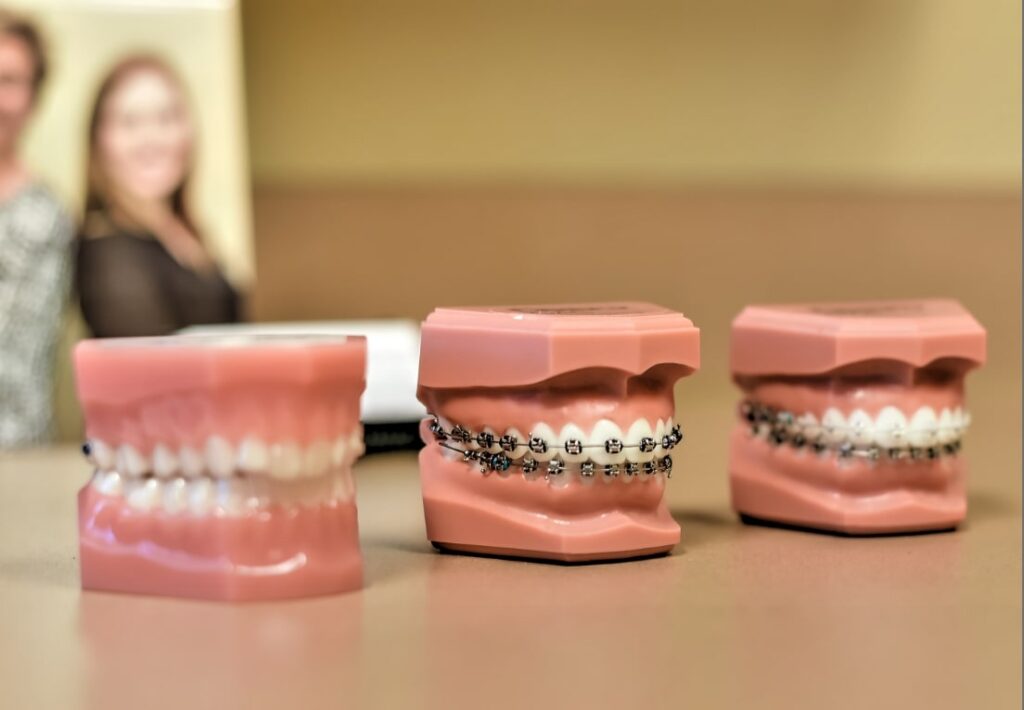Why Cumming Invisalign is the Perfect Option for a Discreet Orthodontic Option
Why Cumming Invisalign is the Perfect Option for a Discreet Orthodontic Option
Blog Article
Comprehensive Guide to Orthodontics Treatments for Fixing Oral Misalignments
In the world of orthodontics, the journey to accomplishing a flawlessly straightened smile involves a myriad of treatments customized to fix oral misalignments. From traditional dental braces to undetectable aligners and also medical options, the area of orthodontics provides a series of services to deal with varying levels of dental irregularities. Understanding the details of each treatment, including their mechanisms, benefits, and potential downsides, is critical in making notified choices about one's orthodontic therapy. As we navigate with the comprehensive guide to orthodontic procedures for correcting dental misalignments, the detailed information of each approach will certainly unravel, losing light on the path towards a functional and harmonious dental positioning.
Orthodontic Procedures Review

Normal changes and surveillance are critical parts of orthodontic therapy to ensure progression is on track and to make any necessary alterations along the way. By going through orthodontic treatments, patients can not only achieve a straighter smile however additionally boost their overall oral health and function.
Typical Dental Braces: How They Work
When taking into consideration orthodontic treatments for dental imbalances, typical dental braces attract attention as a reliable technique for dealing with teeth placing. Conventional braces include brackets, wires, and bands that collaborate to apply constant pressure on the teeth, progressively relocating them into the wanted positioning. The brackets are affixed to the teeth utilizing a special adhesive, and the cords are threaded with the brackets. By readjusting the tension of the cords, orthodontists can manage the direction and force related to each tooth, assisting them into correct positioning in time.
As stress is used to the teeth via the dental braces, the bone surrounding the teeth is improved to support the brand-new tooth placements. People will need regular changes at the orthodontist's workplace to guarantee the braces continue to apply the correct stress for efficient teeth motion.
Unseen Aligners: Disadvantages and pros
Unseen aligners use a convenient and discreet choice to conventional braces for dealing with dental misalignments. These clear, personalized trays are virtually unseen when put on, making them an appealing option for people looking for a much more aesthetically pleasing orthodontic treatment. One of the main advantages of unseen aligners is their removability, enabling simpler upkeep of dental health contrasted to typical dental braces. People can get rid of the aligners prior to eating or cleaning their teeth, lowering the risk of food obtaining stuck in the home appliance and simplifying the cleaning procedure.

Surgical Orthodontic Options
Surgical interventions in orthodontics existing practical alternatives for attending to complicated oral imbalances that might not be efficiently solved through traditional orthodontic therapies. While standard dental braces and unseen aligners can fix numerous orthodontic issues, specific instances require surgical treatment to accomplish optimal outcomes. Surgical orthodontic alternatives are generally suggested for severe malocclusions, dentists by zip code considerable jaw inconsistencies, and instances where the underlying bone framework requires modification to achieve proper positioning.
One usual medical orthodontic procedure is orthognathic surgery, which involves repositioning the jaws to fix practical issues such as problem chewing or talking. This surgical procedure is commonly done in partnership with an orthodontist who aids line up the teeth before and after the treatment. Surgical orthodontics might also include treatments to subject impacted teeth, eliminate excess periodontal cells, or improve the jawbone to develop a much more unified facial profile.
Before thinking about surgical orthodontic choices, people go through an extensive evaluation to figure out the requirement and prospective benefits of such interventions. orthodontist. While surgery may appear challenging, it can significantly improve both the function and aesthetic appeals of the smile in cases where conventional orthodontic therapies fail
Retainers and Post-Treatment Care

Post-treatment treatment entails adhering to the orthodontist's instructions diligently. This might consist of appropriate oral hygiene practices, going to follow-up consultations, and wearing the retainers as recommended. Failing to conform with post-treatment care directions can lead to regression, where the teeth slowly return in the direction of their initial settings. Regular retainer wear, excellent oral health, and normal dental examinations are necessary for keeping the outcomes attained through orthodontic surgical treatment and making sure the check that long-lasting security of the dealt with dental placement.
Conclusion
In conclusion, orthodontic treatments offer numerous options for remedying dental imbalances. Surgical orthodontic options are readily available for extra serious imbalances. In general, orthodontic treatments can successfully enhance dental health and wellness and aesthetic look.
As we browse through the extensive guide to orthodontic procedures for remedying dental misalignments, the detailed information of each approach will unfold, shedding light on the course toward a practical and unified oral placement. - cumming aligners
One of the most usual orthodontic therapies is the use of braces, which are composed of steel brackets and cords that apply gentle stress to slowly change teeth right into the preferred position.When taking into consideration orthodontic therapies for dental imbalances, conventional dental braces stand out as a time-tested method for dealing with teeth placing. Furthermore, invisible aligners might not be ideal for complex orthodontic issues that call for more significant teeth activity, as they are commonly advised for mild to moderate situations. Retainers are customized orthodontic devices created to hold teeth in their fixed settings after the conclusion of orthodontic therapy.
Report this page